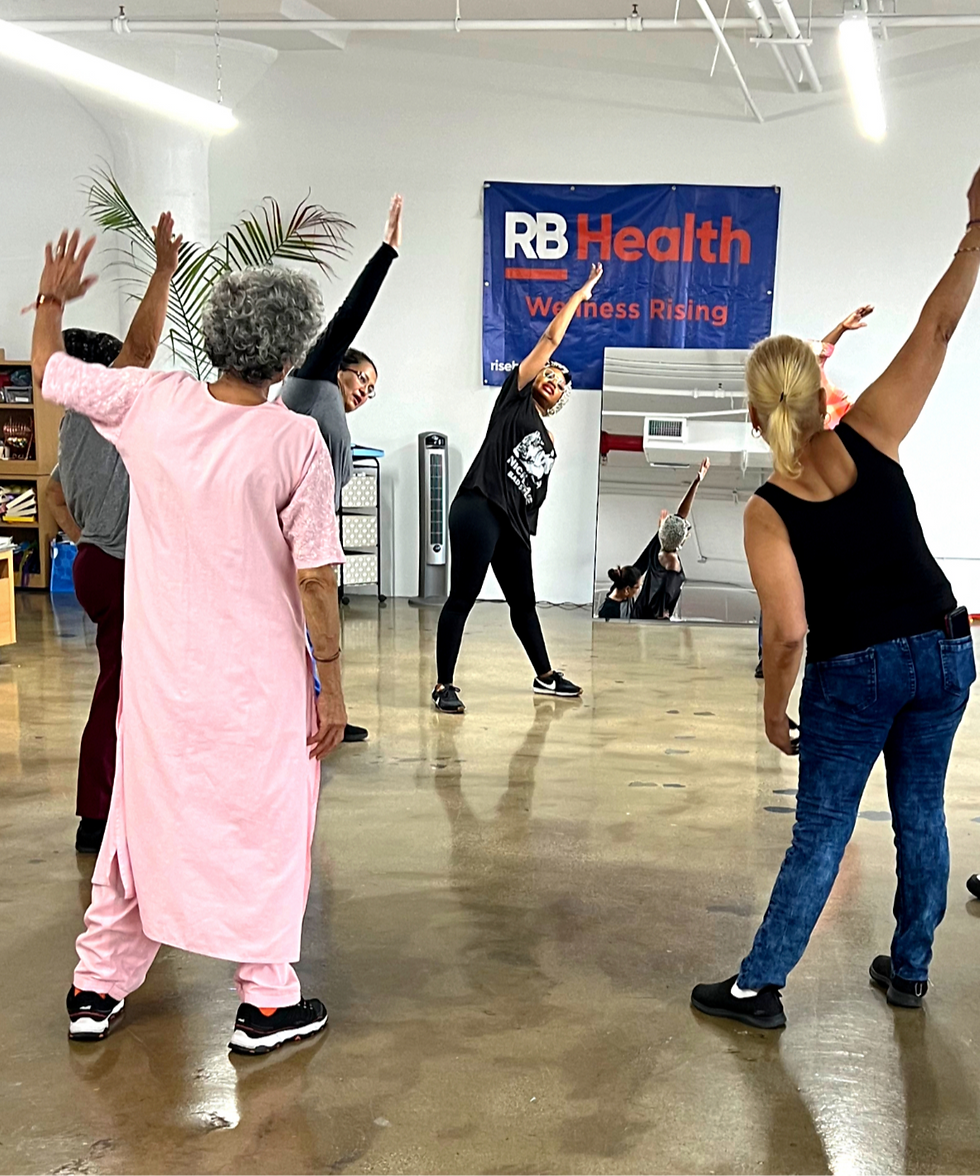Still Got It: The Surprising Ways Movement Supports Healthy Aging (and a life fully lived)
- The Dancing Designer

- Jul 17
- 3 min read

Working with seniors has become one of the most powerful parts of my work. I’ve seen people show up for a senior dance class thinking their best years were behind them, and leave glowing, grounded, and moving. It’s beautiful and inspiring.
Here's what i experience in every class and what the research says about how movement supports healthy aging.
Beyond exercising, seniors who move to music reclaim their bodies and reconnect with memories. There’s something electric that happens when music hits and they remember a time they felt alive, confident, sexy, and free, and realize they still are.
They say dancing is watching the soul smile, and this article is about exactly that: what I’ve learned through these moments, and what science confirms: movement changes everything - the body, brain, and spirit - especially as we age.
THE PHYSICAL BENEFITS OF DANCE:
STRENGTH, BALANCE & EVERYDAY EASE
Many of my clients have shared how just a few weeks of rhythmic practice improved their balance, made walking feel smoother, and helped them regain confidence in their posture.
From a scientific lens, this makes perfect sense.
Sequenced movement, like dancing, learning choreography or exploring a routine that incorporates shifts of weight or even ballet pliés activates stabilizing muscles and enhances coordination



Benefits include:
Improved balance & fewer falls.
Movement patterns that challenge direction and posture strengthen both large and small muscle groups that keep us upright.
Hip mobility & flexibility.
This is especially key for women. The hips are not only structurally vital for balance and locomotion, but also hold emotional tension. Loosening the hips through rhythm-based exercises releases stress, supports pelvic health, and connects women back to their center.
Agility and joint resilience.
Repetitive movement done with proper technique, as you find in many choreographed forms, keeps joints lubricated and muscles responsive.
Better sleep, more stamina.
Many of my clients say they sleep deeper and feel more energized throughout the day after a session.
Increased functional strength.
Regular movement improves ability to squat, reach, and carry out everyday tasks with ease.
A doctor, physical therapist or occupational therapist might see these physical shifts as outcomes. But what I see, and the feedback that I get is that they are invitations to live more fully, more freely, and with greater independence.
YOUR BRAIN ON MOVEMENT (AND MUSIC)
All movement is healthy, but movement with music is life-changing.
When the body synchronizes with a beat, whether it’s a Latin rhythm, jazz groove, or classical strings, it creates a full-brain experience. Think about it, when you dance, you’re tracking tempo, responding emotionally, recalling steps, and staying present all at once.

Here’s what research tells us:
More focus, sharper thinking. Movement that requires coordination and memory, like choreography, stimulates both the left and right hemispheres of the brain, which helps you think more clearly, have better spatial awareness, and leads to continued brain development.
Enhanced moods: The combination of physical exertion and musical engagement boosts dopamine, serotonin, and endorphins.
Memory boost. Music is a powerful anchor for memory, boosting memory in some, slowing decline in others. In studies on aging and Alzheimer’s, patients retain rhythmic sequences tied to music longer than other forms of memory.
Movement is therapeutic for the body AND mind, and helps seniors to find more enjoyment in everyday moments - from crosswords to big celebrations, friends and family.
MOVEMENT BUILDS CONFIDENCE, EXPRESSION, AND JOY
One of the most beautiful things I witness in my sessions with older adults is how movement restores confidence. As clients begin to pick up steps, explore the tempo, and play with the music, something shifts. Those shoulders drop and smiles emerge, which leads to more ease in how they walk out of class than when they walked in.
Even gentle ballet-based movements, such as port de bras (the carriage of the arms) or a grounded Latin sway, help cultivate elegance, posture, and emotional expression.

THE POWER OF MOVING TOGETHER
When movement is shared in a group setting, something even more powerful happens:
There's camaraderie and community.
A sense of belonging and shared experience develops.
Motivation grows because it’s fun, and that fun becomes a form of medicine in itself.
And research now tells us that socialization is one of the top factors leading to a longer life.

MOVEMENT THAT AGES YOU DIFFERENTLY
I’ve worked with individuals in their 20s and individuals in their 70s. And time and time again, the ones who continue to move, with intention, expression, and consistency, carry themselves with a different type of energy. They are clear case studies that prove movement supports healthy aging.

Sure, their bodies are more agile, yes, but what I love most: their eyes sparkle, their voices are strong, and their presence feels youthful. That’s definitely not a coincidence.



Comments